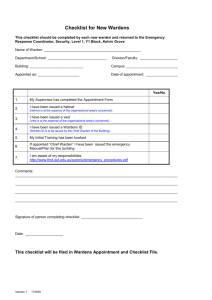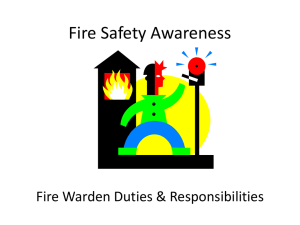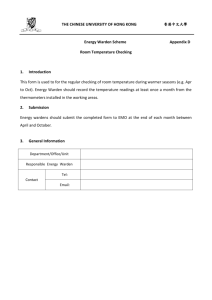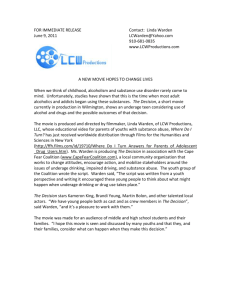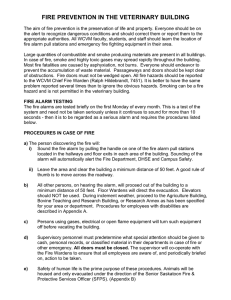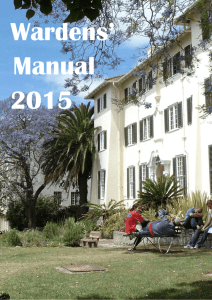Public Buildings Emergency Evacuations
advertisement
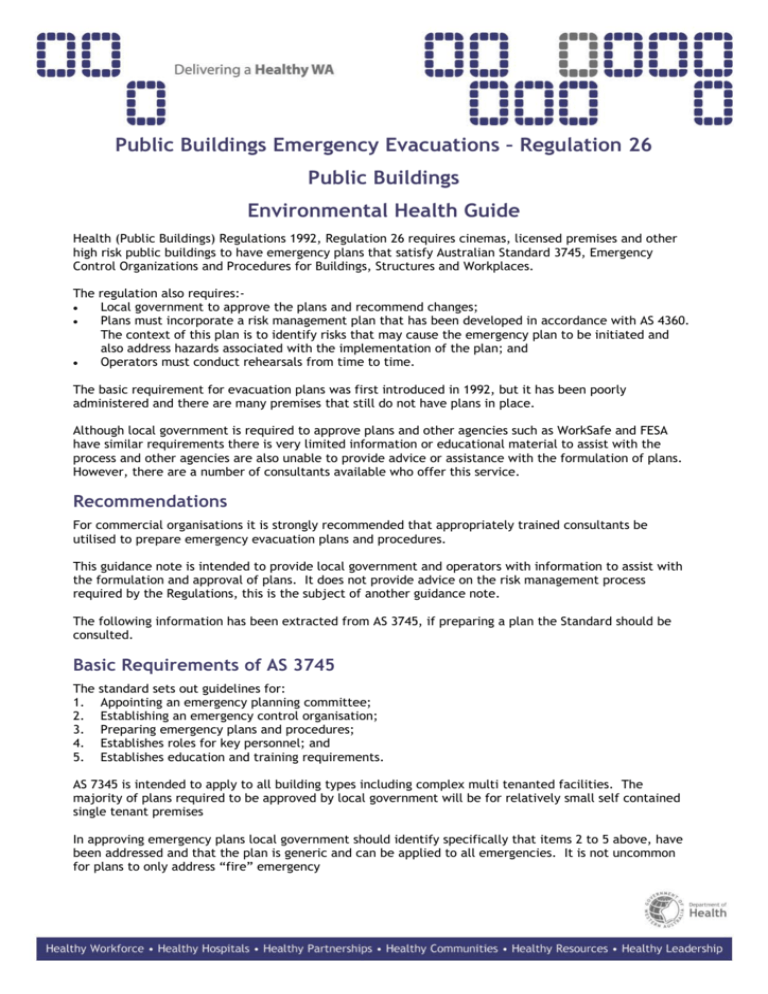
Public Buildings Emergency Evacuations – Regulation 26 Public Buildings Environmental Health Guide Health (Public Buildings) Regulations 1992, Regulation 26 requires cinemas, licensed premises and other high risk public buildings to have emergency plans that satisfy Australian Standard 3745, Emergency Control Organizations and Procedures for Buildings, Structures and Workplaces. The regulation also requires:• Local government to approve the plans and recommend changes; • Plans must incorporate a risk management plan that has been developed in accordance with AS 4360. The context of this plan is to identify risks that may cause the emergency plan to be initiated and also address hazards associated with the implementation of the plan; and • Operators must conduct rehearsals from time to time. The basic requirement for evacuation plans was first introduced in 1992, but it has been poorly administered and there are many premises that still do not have plans in place. Although local government is required to approve plans and other agencies such as WorkSafe and FESA have similar requirements there is very limited information or educational material to assist with the process and other agencies are also unable to provide advice or assistance with the formulation of plans. However, there are a number of consultants available who offer this service. Recommendations For commercial organisations it is strongly recommended that appropriately trained consultants be utilised to prepare emergency evacuation plans and procedures. This guidance note is intended to provide local government and operators with information to assist with the formulation and approval of plans. It does not provide advice on the risk management process required by the Regulations, this is the subject of another guidance note. The following information has been extracted from AS 3745, if preparing a plan the Standard should be consulted. Basic Requirements of AS 3745 The standard sets out guidelines for: 1. Appointing an emergency planning committee; 2. Establishing an emergency control organisation; 3. Preparing emergency plans and procedures; 4. Establishes roles for key personnel; and 5. Establishes education and training requirements. AS 7345 is intended to apply to all building types including complex multi tenanted facilities. The majority of plans required to be approved by local government will be for relatively small self contained single tenant premises In approving emergency plans local government should identify specifically that items 2 to 5 above, have been addressed and that the plan is generic and can be applied to all emergencies. It is not uncommon for plans to only address “fire” emergency Key Requirements Some of the issues plans may need to consider are: • Identify installed emergency facilities, such as communications, emergency lighting and smoke/fire hazard management systems; • People with disabilities; • People unfamiliar with the building and escape procedures; • People who may be affected by alcohol or drugs; • Existing supervisory personnel such as crowd controllers etc; • Identify use of lifts criteria where applicable; • Accounting for and mustering people such as staff and patrons; • Identify muster points and alternative points; • Detail specific communications procedures for people who may be required to man phones and liaise with response organisations such as FESA, Police or Ambulance; and • Identify trained first aid personnel and equipment locations. Control Organisation Plans should use the AS 3745 hierarchy and identification of key personnel as this is an Australia wide standard. Plans also need to identify actual names of job functions of designated personnel well in advance of any emergency. It is essential that relevant wardens are easily identified by other employees, patrons and emergency response organisations, the cheapest and most effective way to do this is to wear appropriately coloured helmets. Relevant helmets must be stored in close proximity to that person’s normal work station. The standard recognises the following terminology and colour identification. 1 2 3 4 Position Chief Warden Deputy Chief Warden Floor or Area Wardens Wardens Identification White – Helmet White – Helmet Yellow – Helmet Red - Helmet Specific Threats Some of the more common threats are fire and bomb threats. Plans should be tailored to specifically address fire and bomb threats. These days pepper spray discharges should also be considered as these can have a debilitating effect on people and are becoming more frequent. AS 3745 provides specific guidance for fire and bomb threats. Education and Training An essential component of emergency planning is training and education for key personnel. All wardens should undergo some training and evacuation exercises should be conducted every six months. Many public buildings utilise transient personnel; therefore, it is essential that all staff who act as a warden or may be called upon to act as a warden are advised of their emergency roles prior to commencing their first shift with that relevant responsibility. Information Recording Registers for emergency procedures, warden notification, warden training and evacuation exercises should also be kept to allow relevant agencies to identify that basic requirements have been addressed. Other Information Additional information may be obtained from Sid Brodie of Department of Health on 9388 4962/ 9388 4999 or from the WorkSafe Publications Officer on 9327 8606 or from the WorkSafe web site at www.safetyline.wa.gov.au. Check List – Public Buildings Emergency Evacuations – Regulation 26 Plan has been prepared by a competent person Emergency Planning committee appointed Emergency control organisation established Warden System in place Wardens identified Warden identification addressed, coloured helmets including storage Education and training requirements identified and addressed Plan reviewed routinely Identify installed emergency facilities, such as communications, emergency lighting and smoke/fore hazard management systems People with disabilities considered Warden roles and responsibilities defined People unfamiliar with the building and escape procedures considered People who may be affected by alcohol or drugs considered Are key roles filled by permanently employed staff Is there a procedure in place to assemble and account for people – staff & patrons Are assembly/muster points identified Are there alternative muster points Detail specific communications procedures for people who may be required to man phones and liaise with response organisations such as FESA, Police, Ambulance Drawing/s provided to identify warden zones of responsibility Drawing/s provided to identify exit routes Drawing/s provided to identify fire extinguishers/fire fighting Drawing/s provided to identify first aid Drawing/s provided to identify mustering/assembly areas Communication methods identified Communications – limited reliance on mobile phone networks For further information contact Environmental Health Directorate Department of Health PO Box 8172 Perth Business Centre Perth WA 6849. Phone: (08) 9388 4999 Fax: (08) 9388 4955 Produced by Environmental Health Directorate © Department of Health, Western Australia 2006
